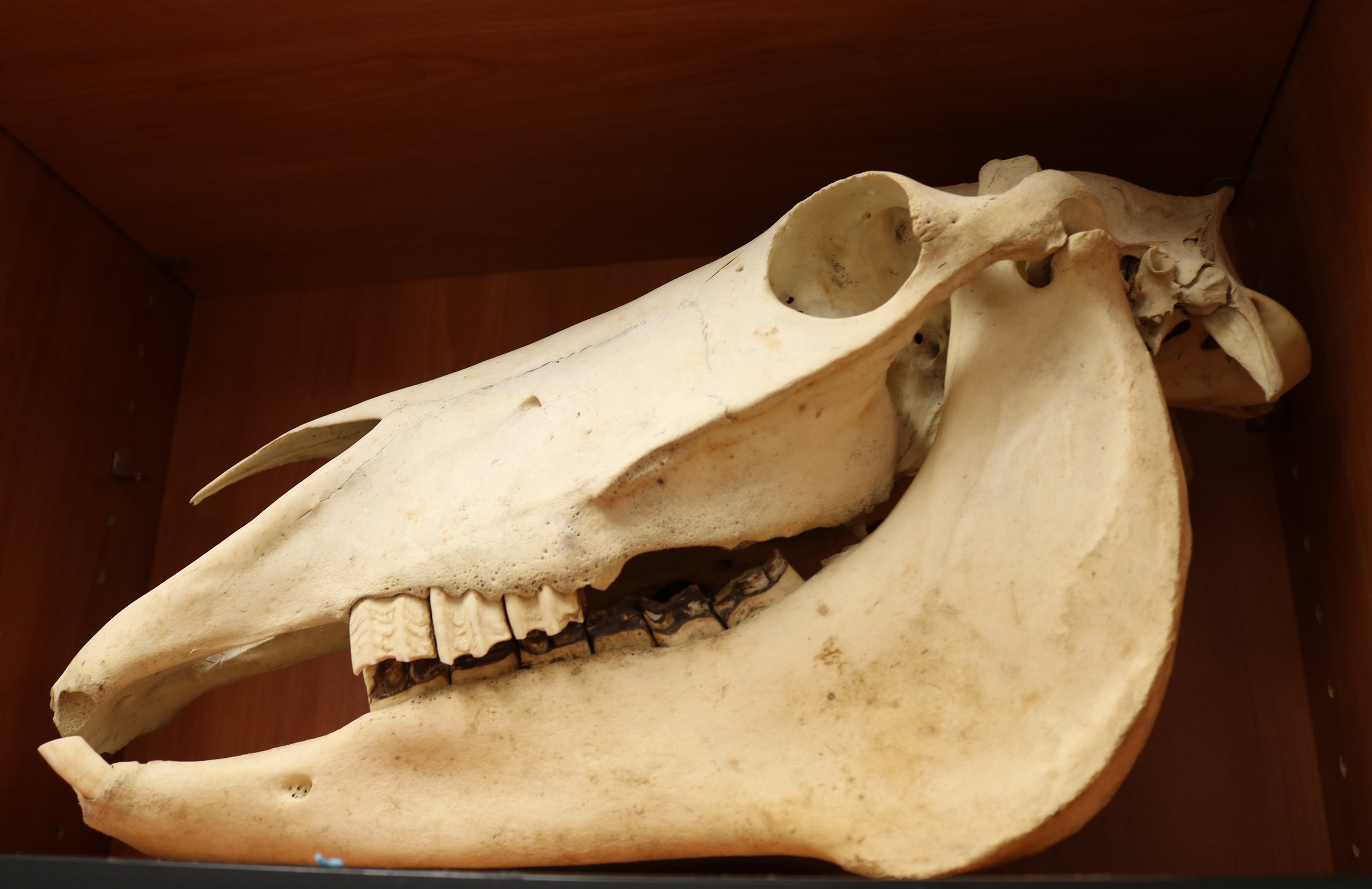
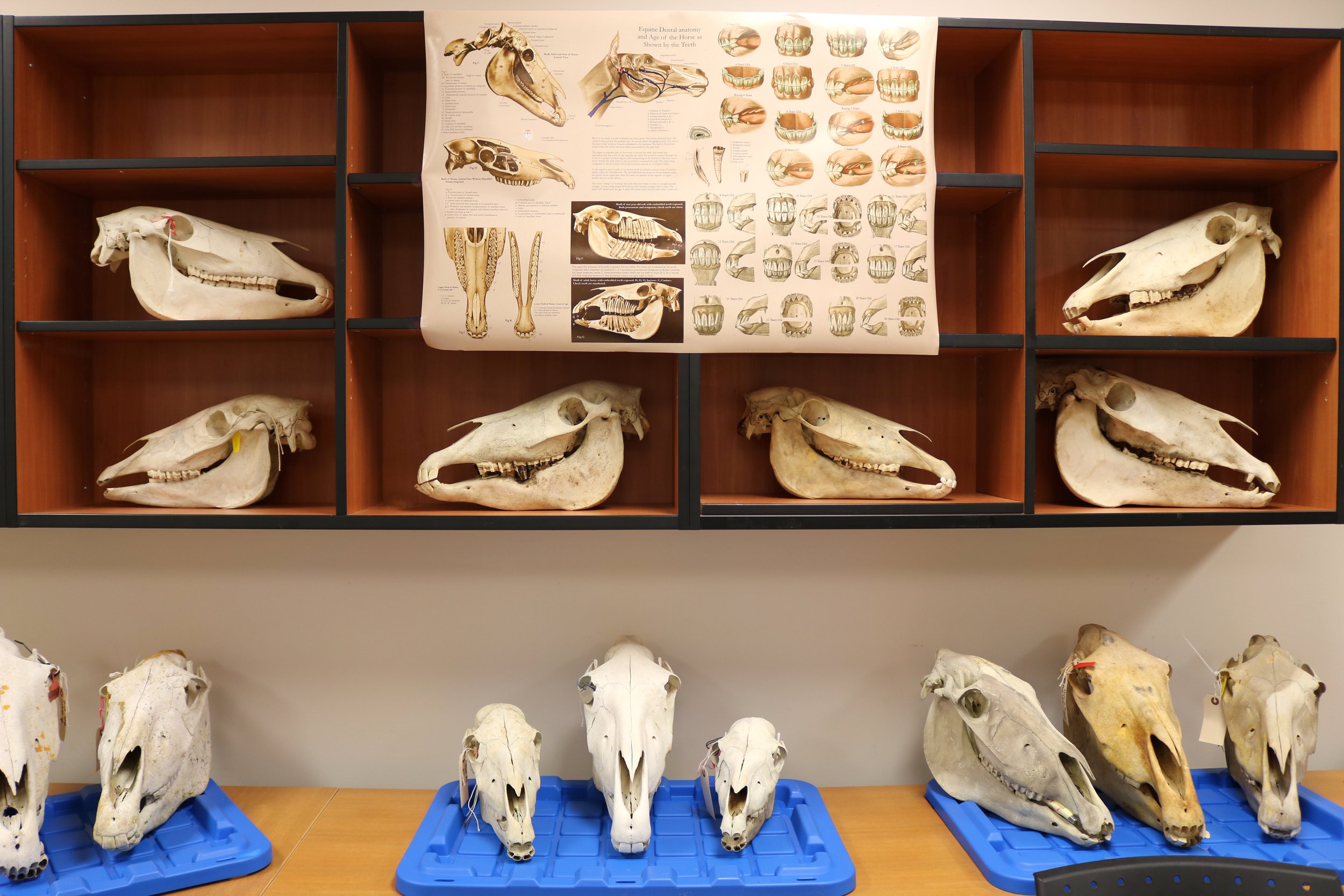
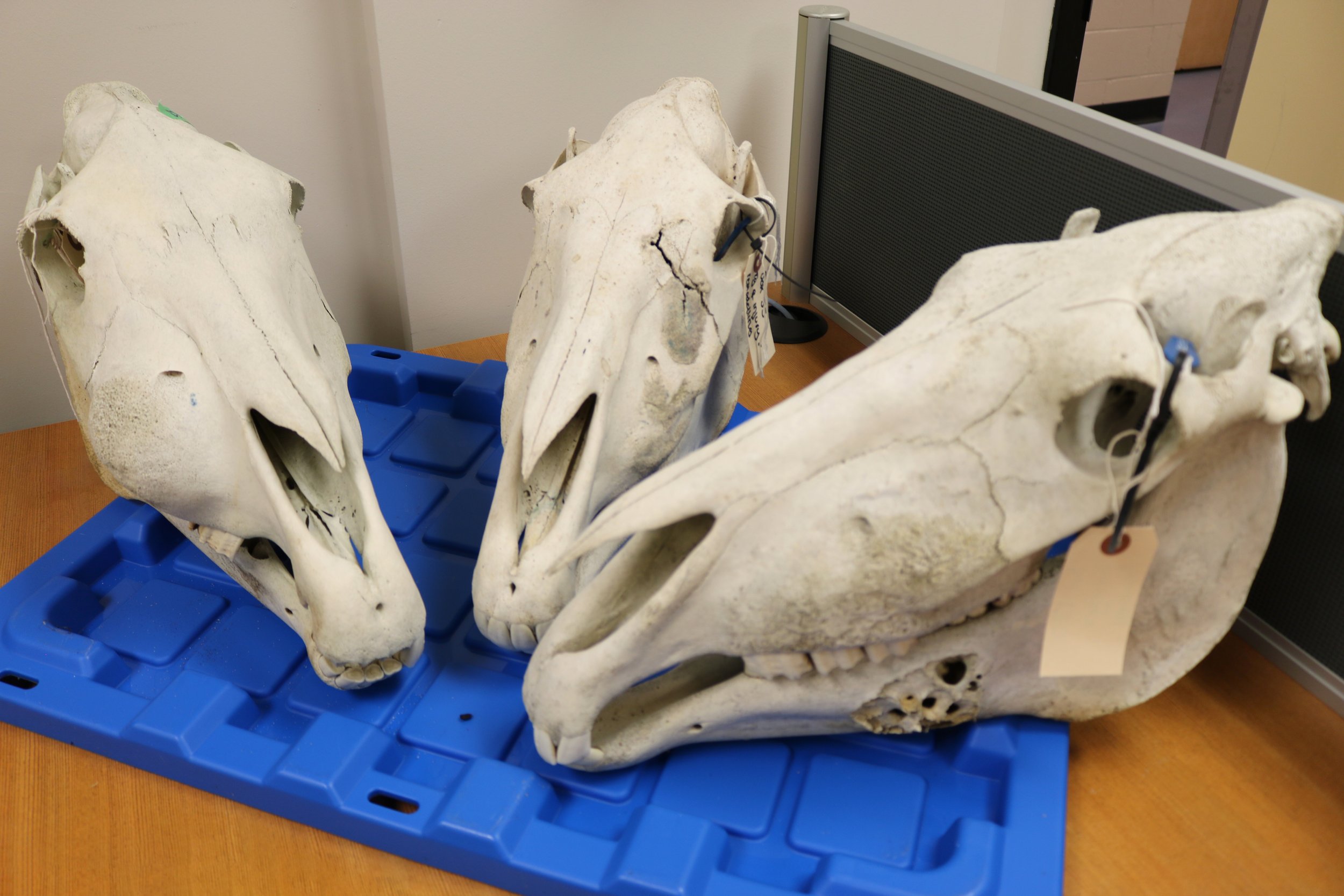
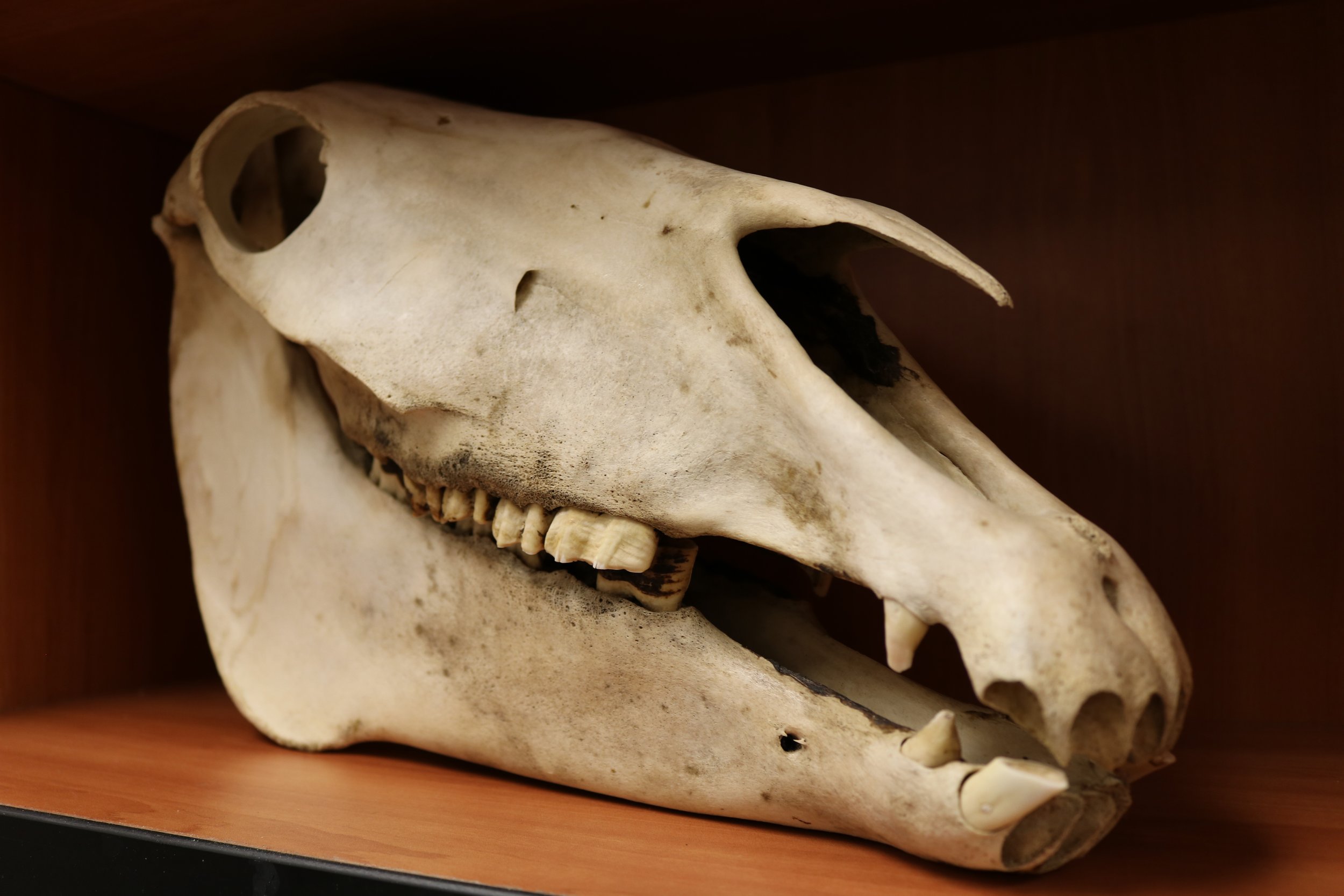
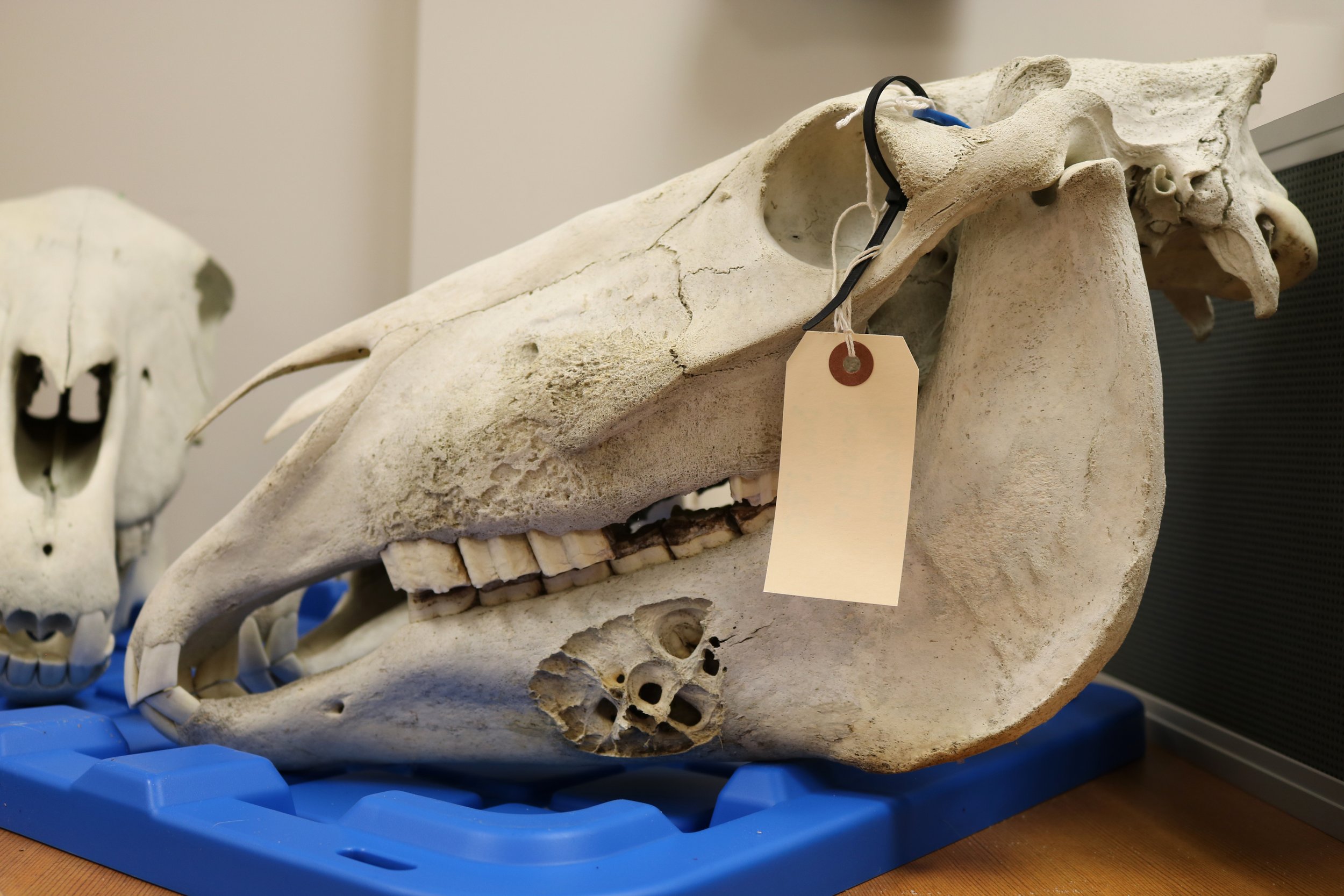


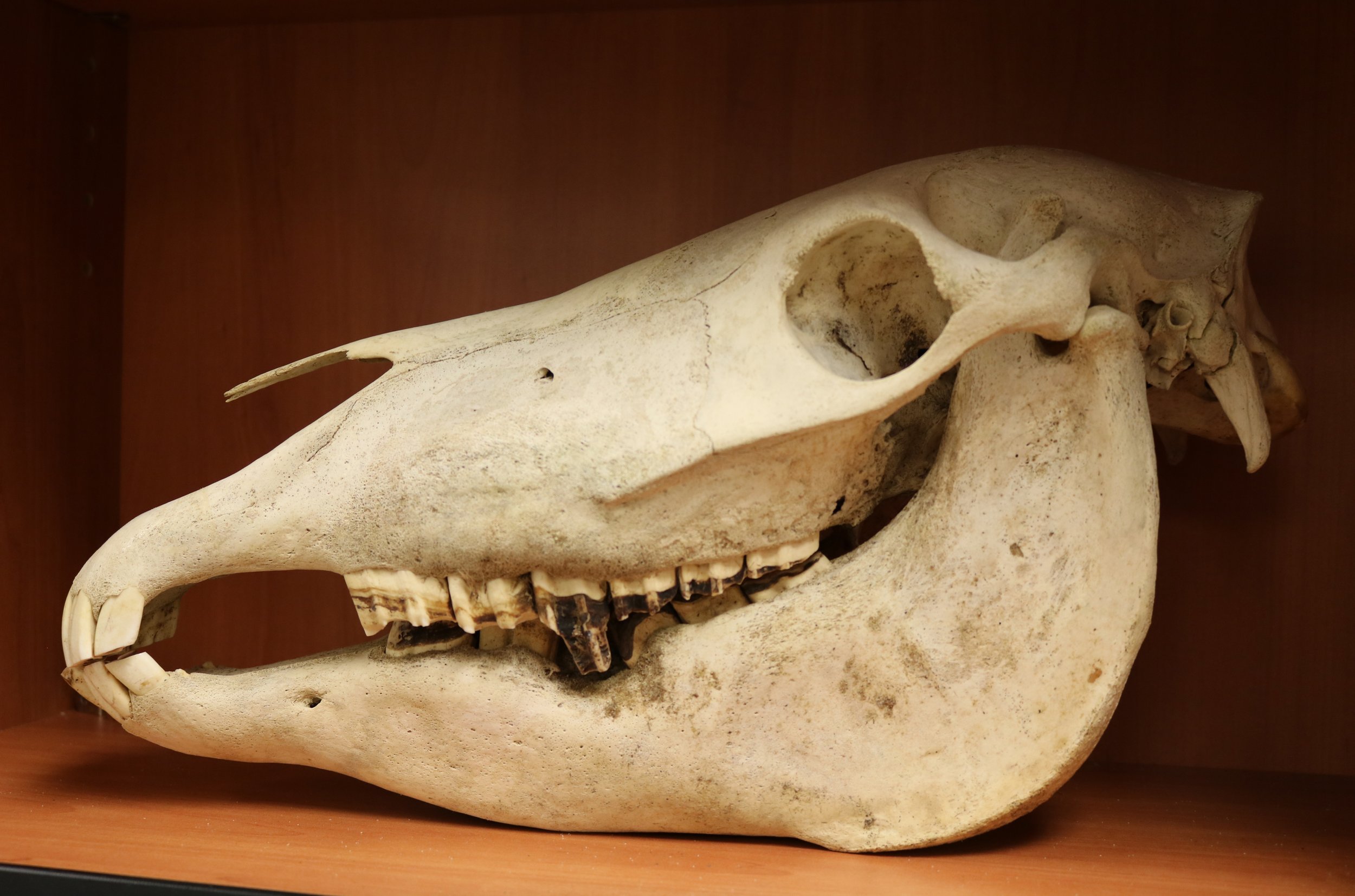

Sable Island is a place of mystery and history, a remote island in the North Atlantic fabled for its sand dunes and shipwrecks, and almost impossible for the average person to access. But for naturalists and biologists, there is much to learn, especially from studying the wild horses who thrive there.
On a November evening, dozens of Haligonians gathered in the McNally Theatre Auditorium to hear the latest Sable Island research and get up close to the skulls of these unique horses collected over 30 years by Zoe Lucas, President of the Sable Island Institute. Katharyn Chadwick and Richard Orton, doctoral students at Saint Mary’s University, collaborated on the project with the Sable Island Institute, Nova Scotia Museum of Natural History and was possible due to funding from SMU Works. The project involved 716 skulls and more than 13,000 measurements and over 6000 photographs. Members of the public were invited to view the skulls on display, ask questions, and even carefully touch the specimens. Two skulls stood out, one for a large growth protruding from the upper jaw and the other for an odd deterioration and pitting of the lower jaw. The researchers want to know if anyone can suggest what caused these malformations; suggestions include a bone abscess or tumour, and a root canal abscess.
More importantly, why study this group of horses and their skulls for clues about their development, variation in skull morphology and age? Richard and Katharyn explain that since the horses first arrived on Sable Island there have been numerous introductions of other horse breeds, to improve breeding stock, provide additional labour and produce foals for resale back on the mainland. This has likely led to a complex mixing of the population, with genetic work revealing traces of Morgan, Clydesdale, and Thoroughbred. Sable Island horses have been isolated for at least 50 years and it is common that island populations exhibit unique traits.
“However, we do not always understand the biological mechanisms underpinning such unique adaptations,” says Katharyn Chadwick. “ Therefore, a deeper understanding of the skull morphology might further our understanding of the evolution of the Sable Island horses and highlight any unusual morphologies unique to this population.”
One of the main aims of the project was to catalogue this unique collection, photographing each skull, estimating age, and noting gender unusual features, post-mortem/storage damage and injuries. Finally, thousands of bagged teeth were paired with the correct skulls.
From the teeth, several well-described aging metrics commonly used in equine studies were recorded for each horse. Using data collected by Zoe Lucas on known age horses, the researchers hope to confirm the suitable use of these metrics for the Sable Island horses.
“Kate and Richard’s study of the horse skulls is an important contribution to the Sable Island Institute’s long-term research program. There is still much to be learned from the collection, and now we have a detailed inventory and preliminary data that will assist in planning follow-up work,” says Zoe Lucas. “This unique and extensive reference collection will enable the Institute to study variations within the Sable population. It will also provide a basis for comparisons with other groups and breeds of horses, as well as with Sable Island horses living on the Island decades from now. This project has been a very productive and encouraging collaboration, and the Sable Island Institute looks forward to further work with Saint Mary’s University and the Nova Scotia Museum.”
Both PhD candidates have travelled from other countries to pursue their studies at the Frasier Lab at Saint Mary’s University. In addition to their research project on the Sable Island horses, they will be addressing conservation concerns of the North Atlantic Right Whale using different genetic approaches. Specifically, Katharyn Chadwick’s thesis is centered on understanding how ship strikes and non-lethal entanglements lead to changes in gene expression via epigenetic modifications, while Richard Orton is assessing the impact of genetic mutation on reproductive success in North Atlantic Right Whales.

